Introduction
In an increasingly unpredictable world, the importance of effective crisis management cannot be overstated. As organizations face a myriad of challenges—from natural disasters to public health emergencies—the need for advanced mobile applications equipped with robust features has become paramount.
These applications not only facilitate real-time communication and situational awareness but also enhance decision-making capabilities during critical moments. With the integration of cutting-edge technologies like artificial intelligence and data analytics, businesses can significantly improve their response strategies, ensuring they are prepared for whatever challenges lie ahead.
This article delves into the essential features and future innovations of crisis management apps, providing insights into how organizations can bolster their resilience and safeguard their operations in times of crisis.
Key Features of Effective Crisis Management Apps
To navigate emergencies effectively, disaster response applications must include several key features that enhance organizational response capabilities. Foremost among these is the necessity of real-time alerts; such notifications are crucial for keeping users informed about developing situations and the actions required. Significantly, 28% of companies that have experienced a difficult situation previously state that they would engage more effectively with customers in the future, emphasizing the importance of communication in managing challenges.
Deloitte's findings further suggest that 34% of businesses emphasize the importance of identifying potential emergency scenarios, underscoring the need for timely information dissemination. Moreover, intuitive user interfaces are essential for streamlining operations, ensuring that users can quickly access crucial information without the burden of extensive training. The integration of diverse data sources is another vital feature, as it provides a holistic view of the situation, allowing for more informed decision-making.
Additional functionalities, such as:
- Offline access
- Customizable dashboards
- Resource allocation tools
collectively enhance the effectiveness of these apps in managing emergencies. The Service Hub's tools, created to improve customer satisfaction and assist front office success, also play an important role in the user experience of emergency response applications. The recent collaboration between Everbridge and Samdesk illustrates this method; their integration seeks to provide preemptive alerts to security teams, significantly enhancing response outcomes.
As we look forward to 2024, the need for advanced features in emergency response applications will keep increasing, with real-time alert systems distinguishing themselves as a crucial element in ensuring strong response strategies.
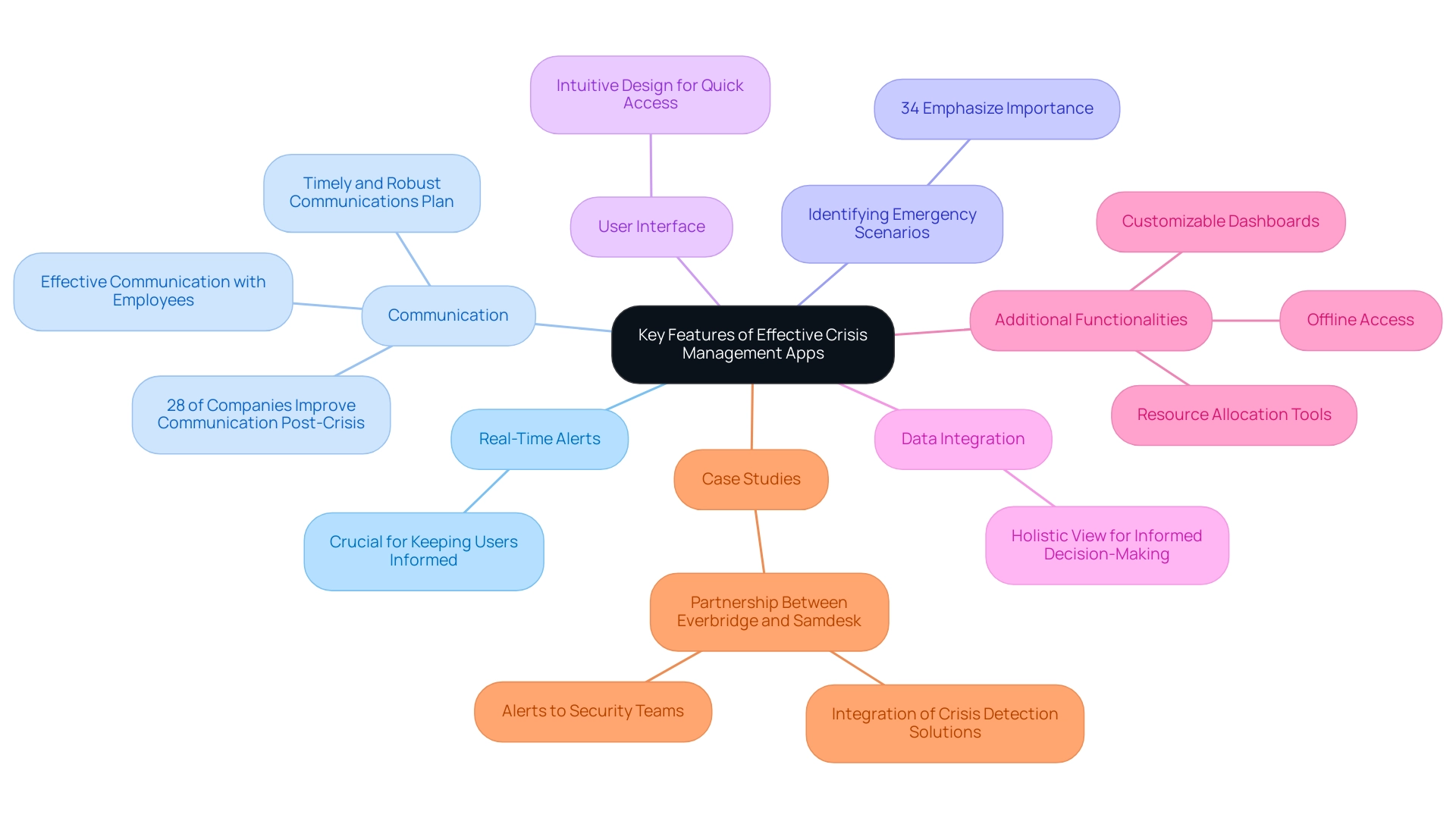
The Role of Communication Tools in Crisis Management
In the domain of emergency handling, efficient messaging tools are vital for keeping all parties informed and aligned. Crisis management mobile apps must include features such as:
- Group messaging
- Push notifications
- Video conferencing capabilities
to enable seamless interaction. These crisis management mobile apps are invaluable for facilitating real-time engagement among team members, emergency responders, and those impacted by the situation.
For instance, during natural disasters, instant messaging features enable rapid dissemination of updates and critical instructions, significantly reducing confusion and aligning response strategies. Significantly, statistics show that 29% of companies facing a challenge acknowledge the necessity for better interaction with employees, while 28% indicate plans to enhance customer relations in upcoming emergencies. As noted by Deloitte, "28% of businesses that have faced challenges previously state that, in the future, they would communicate more effectively with customers."
This underscores a growing awareness of the crucial role of interaction in crisis situations. Additionally, incorporating social media monitoring tools enables organizations to track public sentiment, allowing them to customize their strategies effectively. A historic example is the Ebola outbreak in West Africa in 2014, where Médecins Sans Frontières (MSF) led the charge not only in medical intervention but also in health messaging.
Their community engagement initiatives were crucial in countering misinformation and building public trust, ultimately curbing the outbreak's spread. For Directors of E-commerce, the significance of these communication tools in managing emergencies cannot be overstated, as they are essential in promoting resilience and responsiveness during such situations, directly affecting customer engagement and trust.
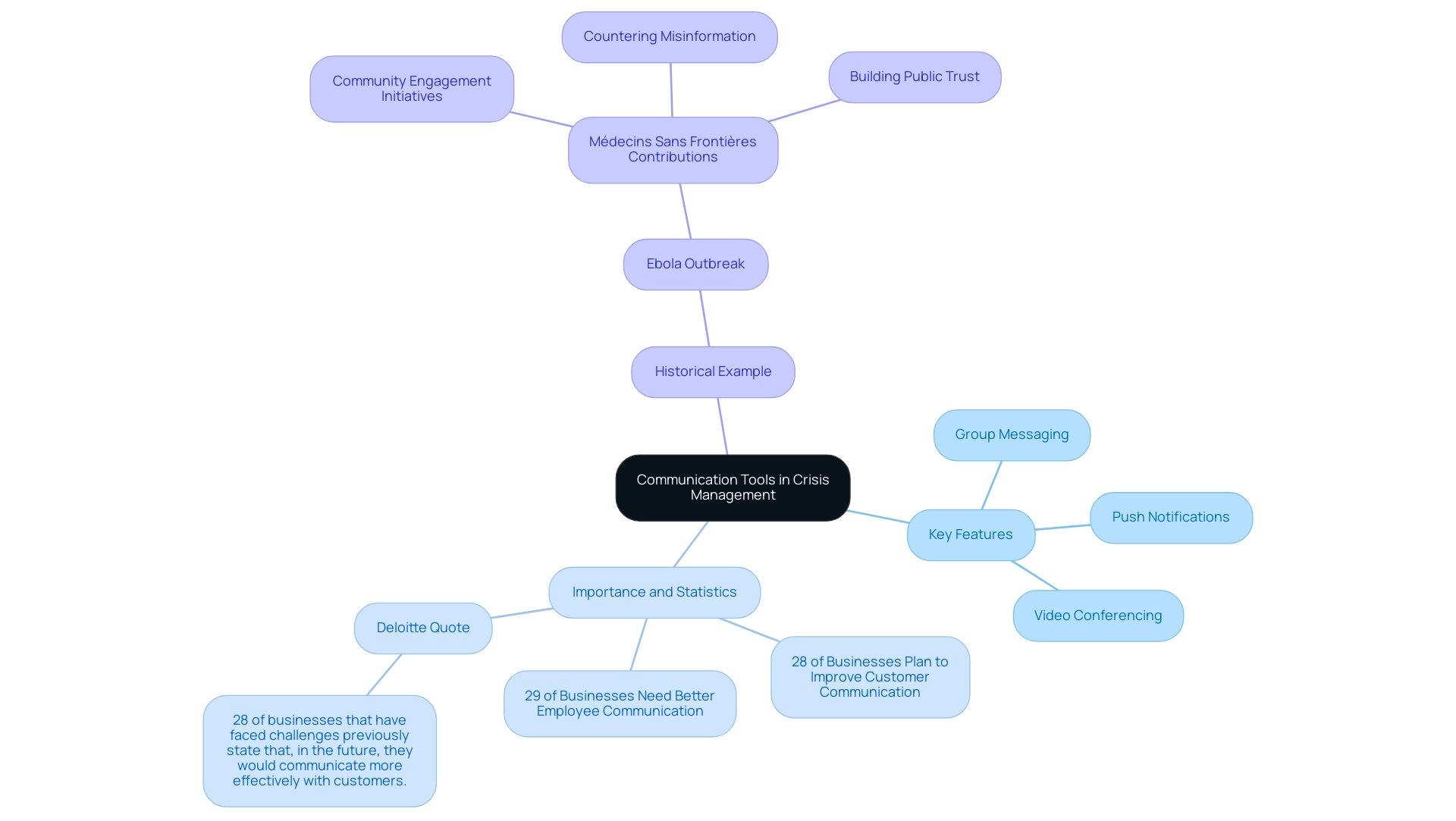
Leveraging Data for Enhanced Situational Awareness
To improve situational awareness during emergencies, it is crucial for mobile applications to utilize advanced analytical capabilities. Integrating real-time data feeds from various sources—such as weather services, social media platforms, and local news outlets—enables users to access the most current information available. Research suggests that companies using real-time analytics can attain 10-15% greater customer satisfaction during emergencies.
Moreover, predictive analytics plays an essential role in handling emergencies by enabling organizations to foresee possible problems before they intensify. Tools such as RapidMiner can be employed for predictive analytics, examining historical patterns in user behavior during past emergencies, which assists decision-makers in optimizing resource allocation and improving their readiness for upcoming events. In addition, VOSViewer can assist in bibliometric analysis, providing insights into relevant research and trends.
The establishment of dashboards for information visualization, utilizing tools like LucidChart, empowers emergency management applications to present this information clearly and effectively. This capability not only assists in swift decision-making but also aligns with Gartner's prediction that by 2025, 75% of organizations will incorporate AI-driven analytics into their emergency response frameworks. Significantly, a 2022 McKinsey report named 'Advanced Analytics for Recovery' showed that companies utilizing advanced analytics experienced a 20% increase in recovery speed after downturns, highlighting how harnessing information can assist organizations not only in enduring challenges but also in becoming more resilient.
Ultimately, utilizing data analytics strengthens situational awareness and positions organizations to respond more effectively in emergencies, particularly within healthcare, community, and government applications.
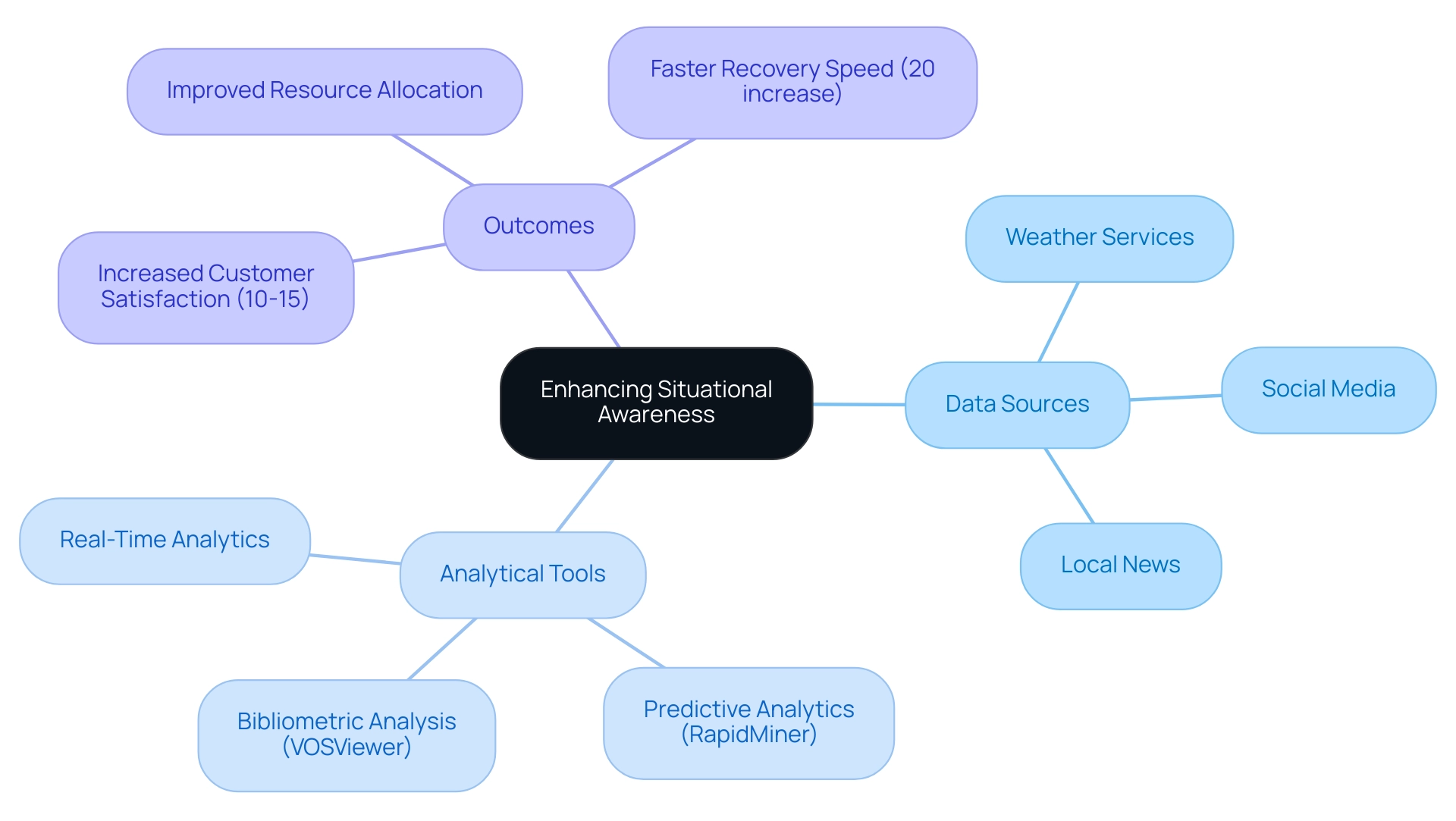
Ensuring Reliability and User Engagement in Crisis Apps
To ensure the highest reliability, crisis management mobile apps must be built on a robust infrastructure capable of accommodating significant traffic during emergencies. Regular testing and timely updates are critical to pinpoint and resolve any technical issues that may compromise functionality. User engagement also plays a pivotal role in the effectiveness of these apps.
Strategies such as:
- Gamification
- Feedback mechanisms
- Educational resources
can significantly enhance active participation. For example, incorporating interactive training modules that instruct users on how to navigate the app in challenging situations not only boosts user confidence but also ensures preparedness. As indicated in a recent analysis of 7,080 messages, an organization’s commitment to two-way interaction correlates strongly with a positive audience response.
This underscores the necessity of fostering a sense of investment among users, thereby improving the app's effectiveness when it is most needed. Furthermore, Deloitte emphasizes that businesses that have faced a difficult situation recognize the importance of identifying challenging scenarios and executing timely communication plans. Additionally, with 78% of IT leaders intending to emphasize digital resilience, encompassing cybersecurity and disaster recovery in their efforts, the importance of crisis management mobile apps for dependable emergency response is more vital than ever.
Upcoming developments in predictive analytics, especially advancements in edge computing and IoT, will further improve information gathering and the precision of emergency forecasts, rendering these applications increasingly essential.
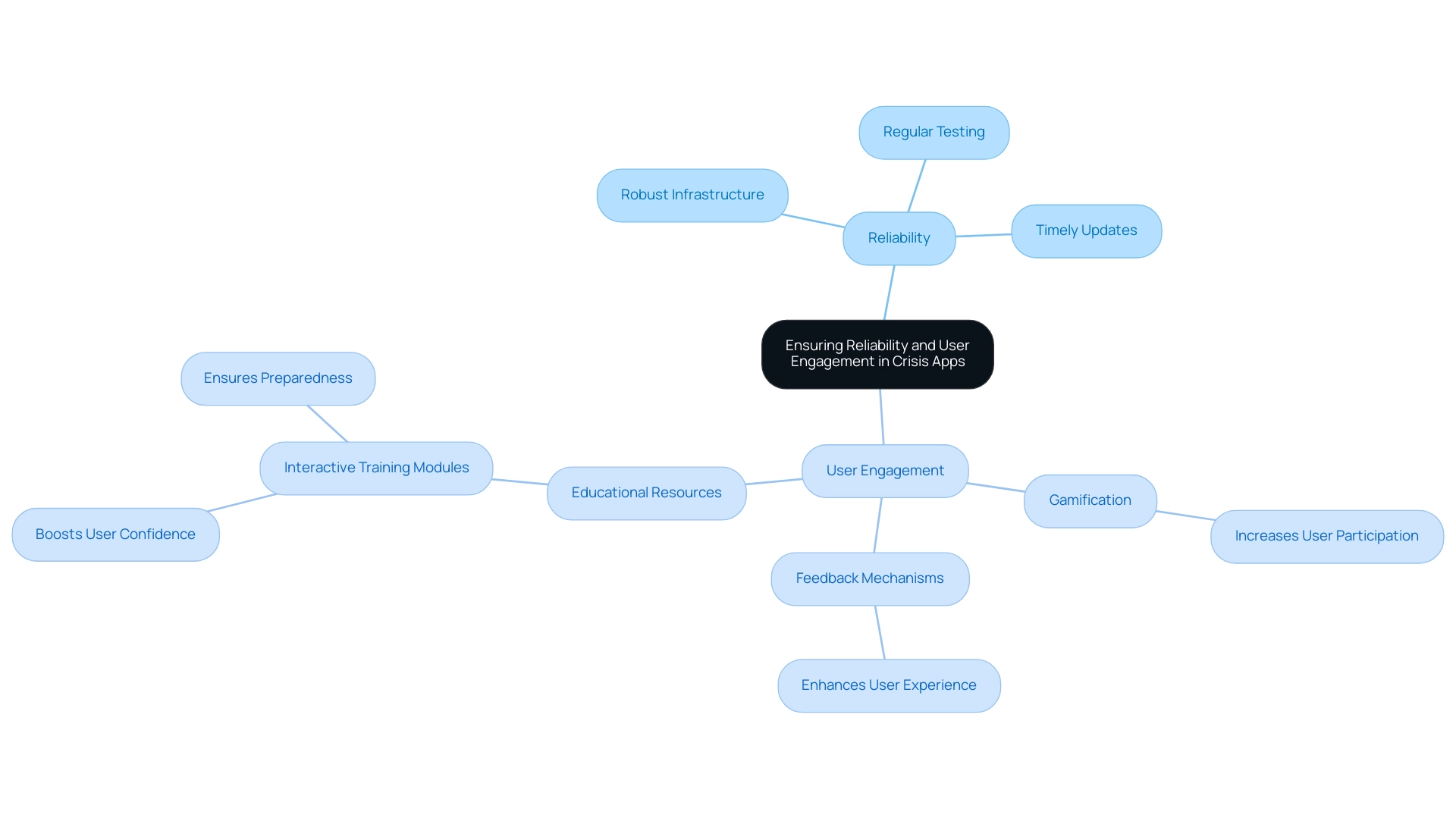
Future Innovations in Crisis Management Mobile Applications
The ongoing evolution of technology is paving the way for significant advancements in crisis management mobile apps, especially through the integration of artificial intelligence (AI) and machine learning. These technologies excel at swiftly analyzing vast datasets, offering predictive insights that can shape effective response strategies. For instance, AI can proactively identify potential emergency scenarios by recognizing patterns in historical data, enabling organizations to act before situations escalate.
Moreover, the adoption of augmented reality (AR) can significantly influence training simulations for responders, enabling them to participate in realistic emergency scenarios within a controlled environment. Keeping up with these emerging trends is essential for organizations aiming to improve the effectiveness and relevance of their response strategies in an increasingly digital environment. According to industry predictions, the market for crisis management mobile apps is anticipated to expand at a CAGR of 7.1% from 2024 to 2033, highlighting the significance of embracing these technologies.
As highlighted in industry conversations, a significant trend in the software market for crisis management mobile apps is the rise of AI-driven incident assistants, which will transform how organizations handle incident response and recovery. Companies like Lockheed Martin and IBM are at the forefront of this transformation, leveraging their expertise to develop innovative solutions that address the evolving needs of crisis management.
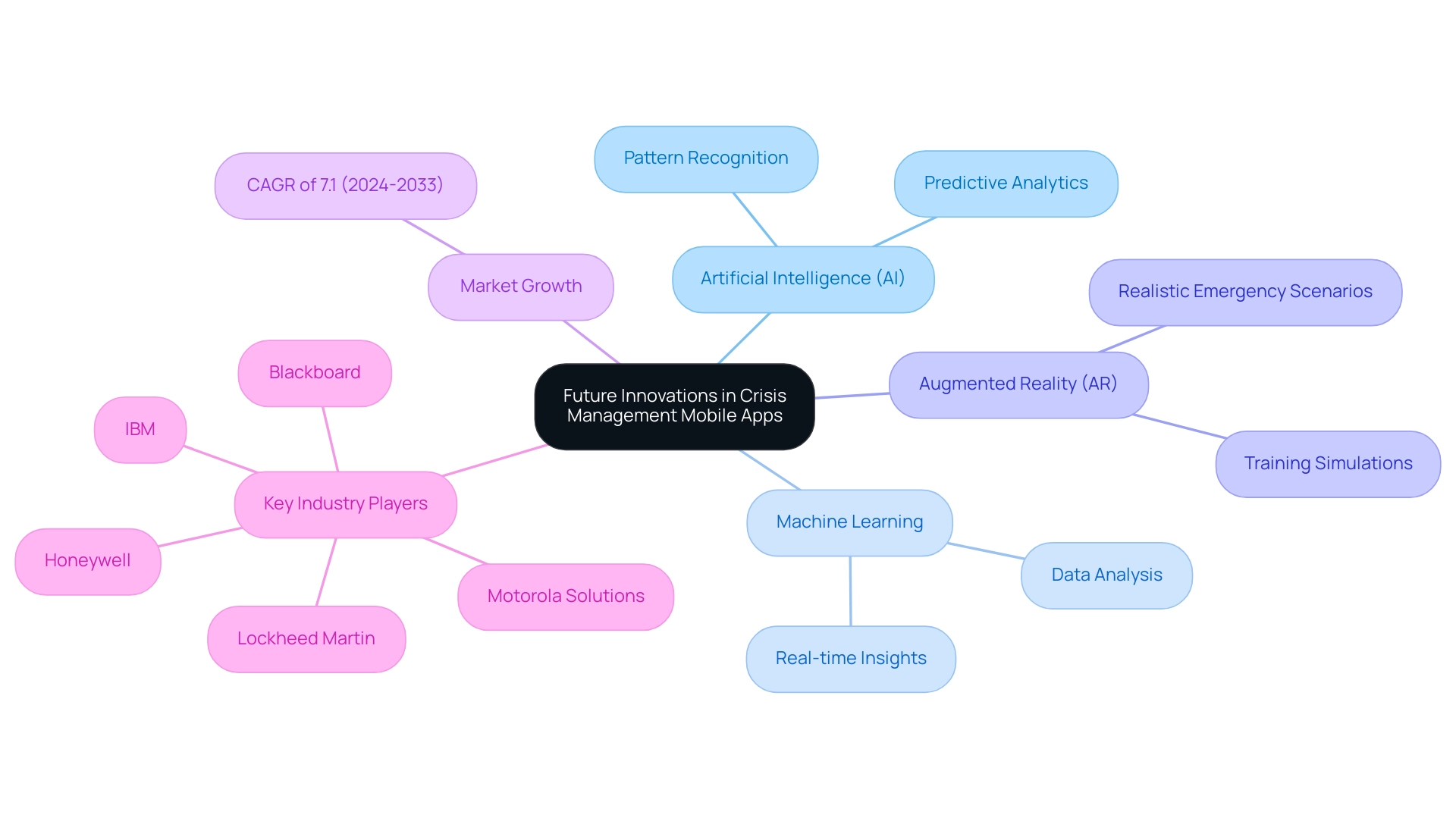
Conclusion
In the face of an unpredictable world, the role of crisis management apps has never been more critical. As detailed throughout this exploration, effective crisis management hinges on several key features, including:
- Real-time alerts
- Intuitive user interfaces
- Robust communication tools
These elements not only facilitate timely information dissemination but also empower organizations to respond swiftly and effectively to various emergencies.
The integration of advanced data analytics further enhances situational awareness, allowing organizations to leverage real-time information and predictive insights. By employing these technologies, businesses can not only navigate crises more adeptly but also improve their overall resilience and customer satisfaction. The emphasis on reliable infrastructure and user engagement strategies ensures that these applications remain effective even under pressure, fostering a culture of preparedness among users.
Looking ahead, the potential for innovation within crisis management applications is vast. The incorporation of:
- Artificial intelligence
- Machine learning
- Augmented reality
promises to redefine how organizations prepare for and respond to crises. As the market for crisis management software continues to grow, staying informed about these advancements will be essential for organizations committed to safeguarding their operations and stakeholders.
Ultimately, embracing these technologies and features is not just about managing crises; it is about transforming how organizations operate in times of uncertainty. By prioritizing effective crisis management solutions, businesses can enhance their ability to withstand challenges and emerge stronger, reinforcing their commitment to resilience in an ever-changing landscape.





